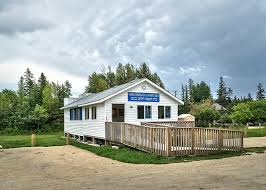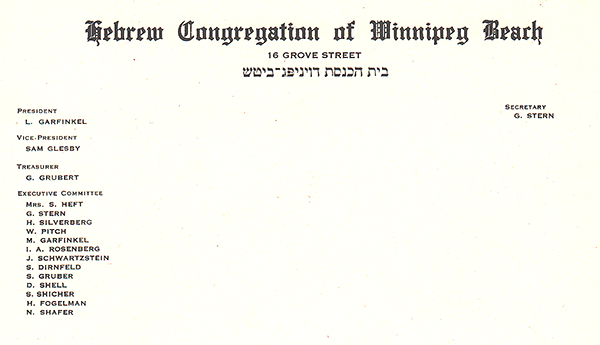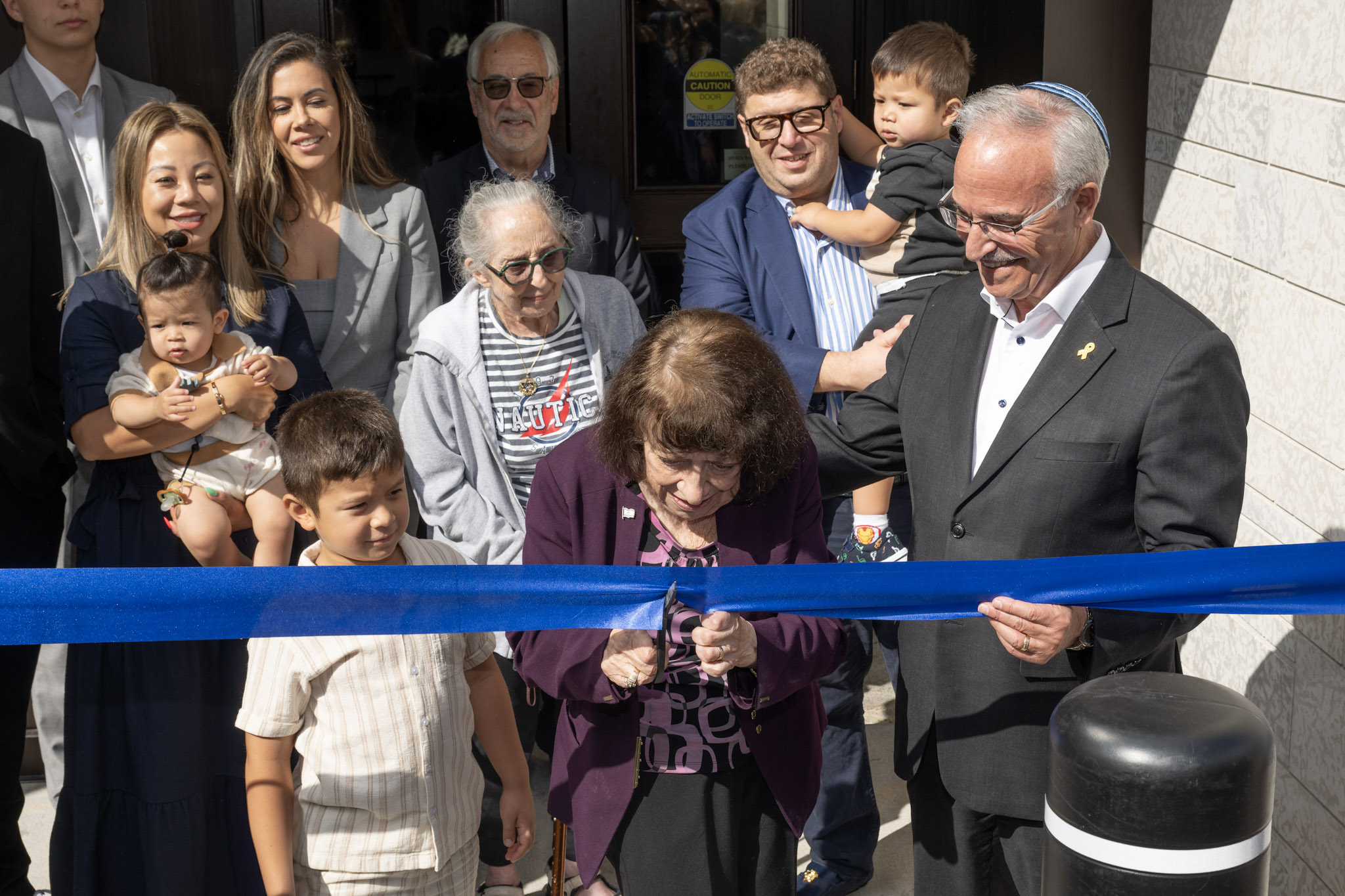Local News
Avi Posen on engaging young Jews through media

By BERNIE BELLAN Elsewhere on this website you can read our preview of Avi Posen’s presentation at this year’s Limmud (which was held on Sunday, March 6, via Zoom.)
For readers who may not have read that article, in it Avi gave an overview of the work that he has been doing in Israel for three and a half years, ever since he and his wife Illana made aliyah to Israel in 2019. You can read that article at http://jewishpostandnews.ca/local/1062-avi-posen-to-discuss-engaging-the-next-generation-of-jews-through-media-at-limmud). But what you’re about to read is a report on what Avi actully had to say on March 6.
Working for a company called Open Dor Media, Avi has been honing in on some of the methods that would have the greatest impact in reaching a young (mostly teen age) audience throughout the world, including Winnipeg.
Through videos, articles and podcasts, Avi has been helping educators deal with often controversial subjects, such as Israelis’ relationships with Palestinians, in ways that are both honest and illuminating.
During Avi’s Limmud presentation, he not only explained in some detail what it is that Open Dor Media does, he also offered his Zoom audience some very insightful information about how young people connect to the wider world.
Perhaps it might not come as a total surprise to some of our readers, but when you look at the screenshot accompanying this article, taken during Avi’s presentation, and which contains information about how much time young people are spending on their phones – at least nine hours per day, according to a 2015 study, it’s hard not to despair for their future development as well-rounded individuals.
(By the way, it should also come as no surprise therefore, that our own Jewish Federation is devoting a considerable effort to trying to engage younger audiences through such totally superficial social media as Instagram. Hey, if you can’t persuade people to read something that might take more than 10 seconds of their time, at least you can engage them with pictures and videos – right?)
But, what Avi Posen and his colleagues at Open Dor Media have been doing is offering more than cute pictures of smiling teens, they’ve been creating media that actually challenge young people to think (and I know, that’s not an easy task when you’re trying to reach someone who spends nine hours a day on their mobile phone).
In one of the other slides that Avi offered to his Limmud audience, he threw out some of the questions that Open Dor Media pose to young people, including:
“Most North American Jews define themselves as ‘cultural Jews’. How do you define yourself Jewishly? Is it your culture, nationality, religion, ethnicity, family, or something else?”… whew, heavy stuff for the TikTok generation – but good on Avi for not dumbing down his message.
In an article I wrote in 2020 about what Avi is doing with Open Dor Media, I specifically noted that I was quite impressed with a couple of videos that I saw which dealt with Israelis and Palestinians. With apologies to Bradley Pollock, Bill Narvey and Myron Love, I think it important to realize that trying to understand the Palestinian perspective on issues does not necessarily make one a self-hating Jew or a “woke” liberal.
I wonder then what those three would say to the idea of discussing the Palestinian right of return in Jewish schools around the world. Here is something that Open Dor Media offers as part of its education materials: An “article that describes why Palestinians have a ‘right of return’” and “an article that contends they do not.”
After reading the articles (and I wonder how many young people could actually absorb that kind of material when their attention spans are mostly limited to whatever is current on Instagram), students are asked to “Think through the most salient reasons for the ‘right of return’ and the three most salient reasons against it.”
Wow! Now that’s definitely not something I would expect to be thrown out for discussion in most Jewish schools.
For that matter, as much as there was an interesting array of speakers at Limmud again, as there always has been, looking over the subjects that were being offered, there wasn’t anything the least bit controversial – certainly nothing that would have challenged any of the many sacred cows that are so lovingly held by a certain number of individuals ( and I would suggest that’s an increasingly dwindling number) within our established Jewish community.
But, inspired as I am by Avi Posen’s presentation – which dared to suggest that young Jews need to be challenged, perhaps next year I’ll ask Limmud whether I can mount a multi-pronged presentation which will follow up on the kinds of questions Open Dor Media poses to younger audiences – and which will challenge individuals to think hard about what it really means to be Jewish in this day and age. Is it more than liking Jewish food and having a sense of humour? Who knows?
For anyone interested in viewing any of the many videos Open Dor Media has created over the years on a multitude of subjects, go to their Youtube channel: Jewish unpacked, or take a look at their website: jewishunpacked.com.
Local News
Thank you to the community from the Chesed Shel Emes

We’re delighted to share a major milestone in our Capital Campaign, “Building on our Tradition.” Launched in November 2018, this campaign aimed to replace our outdated facility with a modern space tailored to our unique needs. Our new building is designed with ritual at its core, featuring ample preparation space, Shomer space, and storage, creating a warm and welcoming environment for our community during times of need.
We’re grateful to the nearly 1,000 generous donors who contributed over $4 million towards our new facility. A $750,000 mortgage will be retired in November 2025, completing this monumental project in just seven years.
We’re also thrilled to announce that our Chesed Shel Emes Endowment Fund has grown tenfold, from $15,000 to $150,000, thanks to you, the Jewish Foundation of Manitoba’s FundMatch program, and Million Dollar Match initiative in 2024. Our fund helps ensure that everyone can have a dignified Jewish funeral regardless of financial need.
As we look to the future, our goal remains to ensure the Chevra Kadisha continues to serve our community for generations to come. Our focus now shifts to replenishing our savings account and growing our JFM Endowment fund.
We’re deeply grateful for your support over the past several years.
It’s our privilege to serve our community with care and compassion.
With sincere appreciation,
Campaign cabinet: Hillel Kravetsky, Gerry Pritchard, Stuart Pudavick,
Jack Solomon, and Rena Boroditsky
Murray S. Greenfield, President
Local News
Winnipeg Beach Synagogue about to celebrate 75th anniversary

By BERNIE BELLAN (July 13) In 1950 a group of cottage owners at Winnipeg Beach took it upon themselves to relocate a one-room schoolhouse that was in the Beausejour area to Winnipeg Beach where it became the beach synagogue at the corner of Hazel and Grove.
There it stayed until 1998 when it was moved to its current location at Camp Massad.
On August 2nd members of the synagogue will be holding a 75th anniversary celebration.

As part of the celebration anyone who is a descendant or relative of any of the original members of the first executive committee (as seen in the photo here) is invited to attend the synagogue that morning.
If you are a relative please contact Abe Borzykowski at wpgbeachshule@shaw.ca or aborzykowski@shaw.ca to let Abe know you might be attending or for more information about the 75th anniversary celebration.
We will soon be publishing a story about the history of the beach synagogue, which is something I’ve been writing about for over 25 years.
Local News
Vickar Family cuts ribbon on new Tova Vickar and Family Childcare Centre

By MYRON LOVE In the words of Larry Vickar, the Shaarey Zedek’s successful Dor V’ Dor Campaign “is not only a renewal of the synagogue but truly a renewal movement of Jewish life in our community.”An integral part of that renewal movement was the creation of a daycare centre within the expanded synagogue. On Monday, June 23, Larry and Tova Vickar cut the ribbon, thereby officially opening the Tova Vickar and Family Childcare Centre in the presence of 100 of their family members, friends and other supporters of the project.
The short program preceding the morning ribbon-cutting began with a continental breakfast followed by a welcome by both Fanny Levy, Shaarey Zedek’s Board President, and Executive Director Dr. Rena Secter Elbaze. In Elbaze’s remarks, she noted that Larry and Tova wanted their family (including son Stephen and family, who flew in from Florida) and friends at the event to celebrate the opening of the Tova Vickar and Family Childcare Centre, “not because of the accolades, but because, as Larry put it, he hopes that their investment in the congregation will inspire others to do the same.”
“When Larry and I spoke about what this gift meant to him and the message he wanted people to take away,” she continued, “I couldn’t help but connect it to the teachings of Reb Zalman Schachter-Shalomi whose book – Age-ing to Sage-ing – changes the whole way we look at the concept of ageing and basing it on our ancestral teachings.”
She explained that his concept of “Sage-ing” is based on three key ideas – Discover your meaning and purpose; accept our mortality and think about the legacy you want to leave.
“Larry spoke about these exact concepts when we met,” she said.
Elbaze also noted the presence of Shaarey Zedek’s newly-arrived senior Rabbi Carnie Rose, former Rabbi Alan Green, and area MLAs Mike Moroz and Carla Compton.
Larry Vickar expressed his great appreciation for all those in attendance. “Tova and I are deeply moved to stand here with you today for this important milestone in our community”, he said. “We are grateful to be surrounded by all of you, the people we care about, our family and friends… you who have touched our lives and played some part in our journey.”
